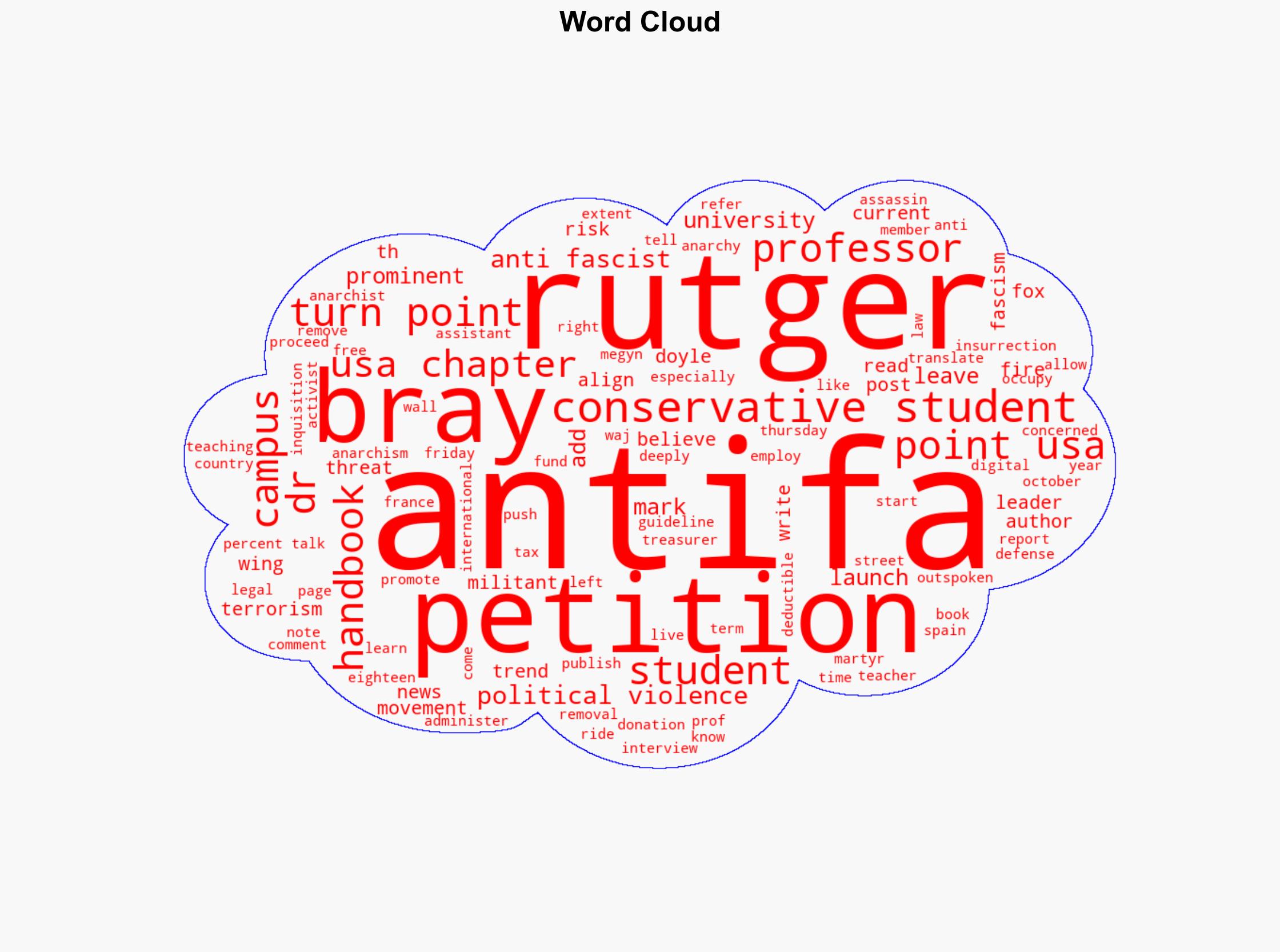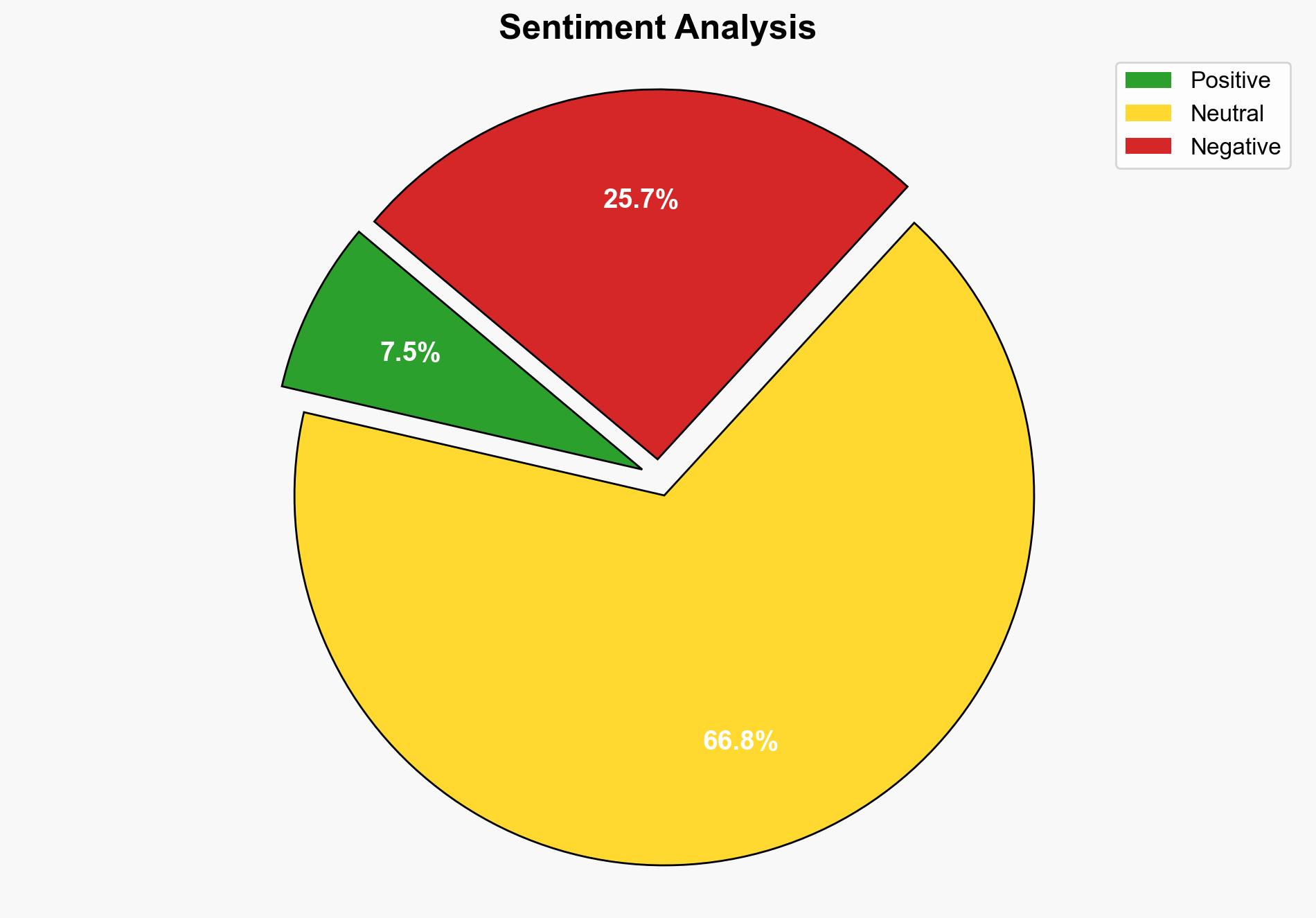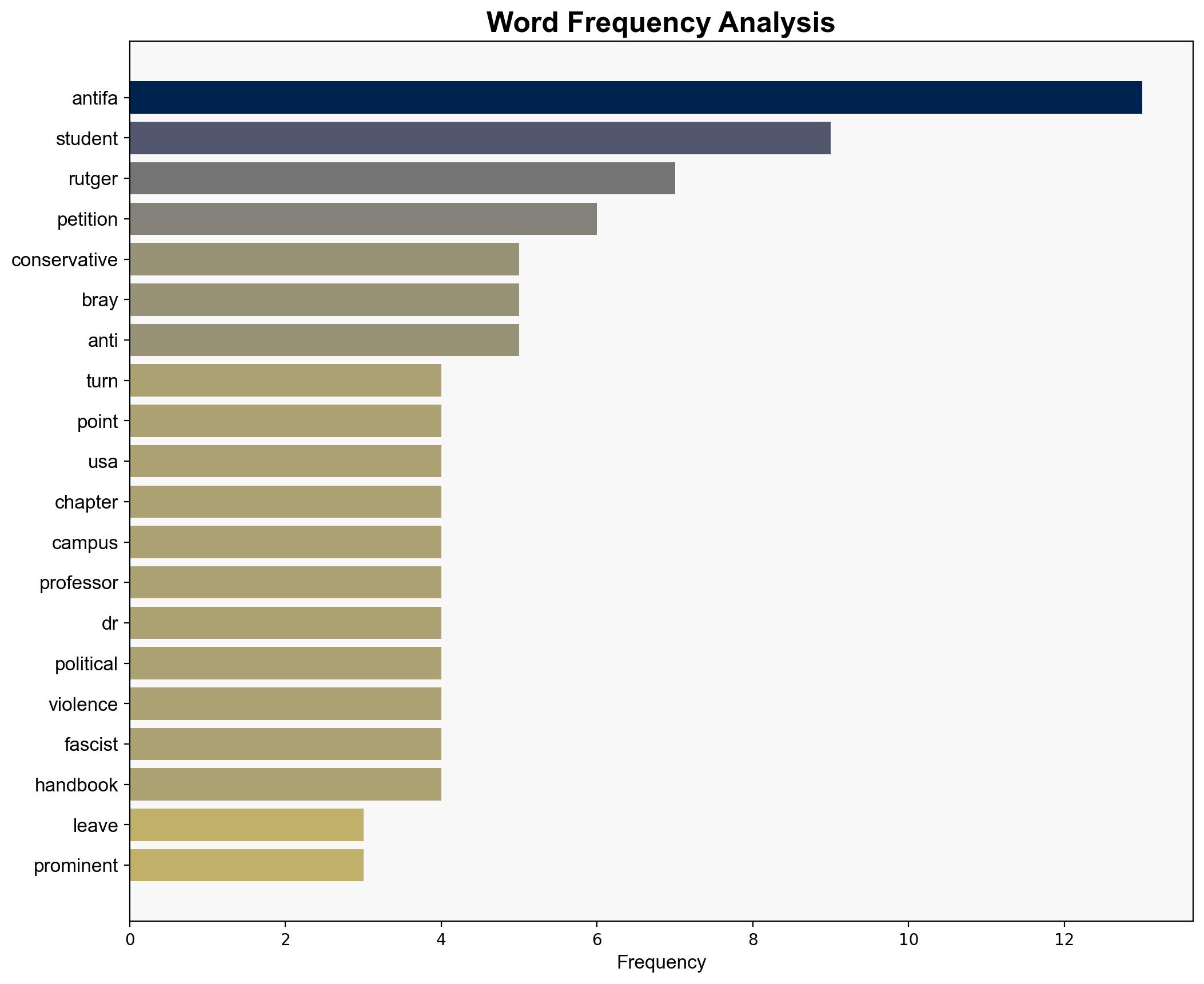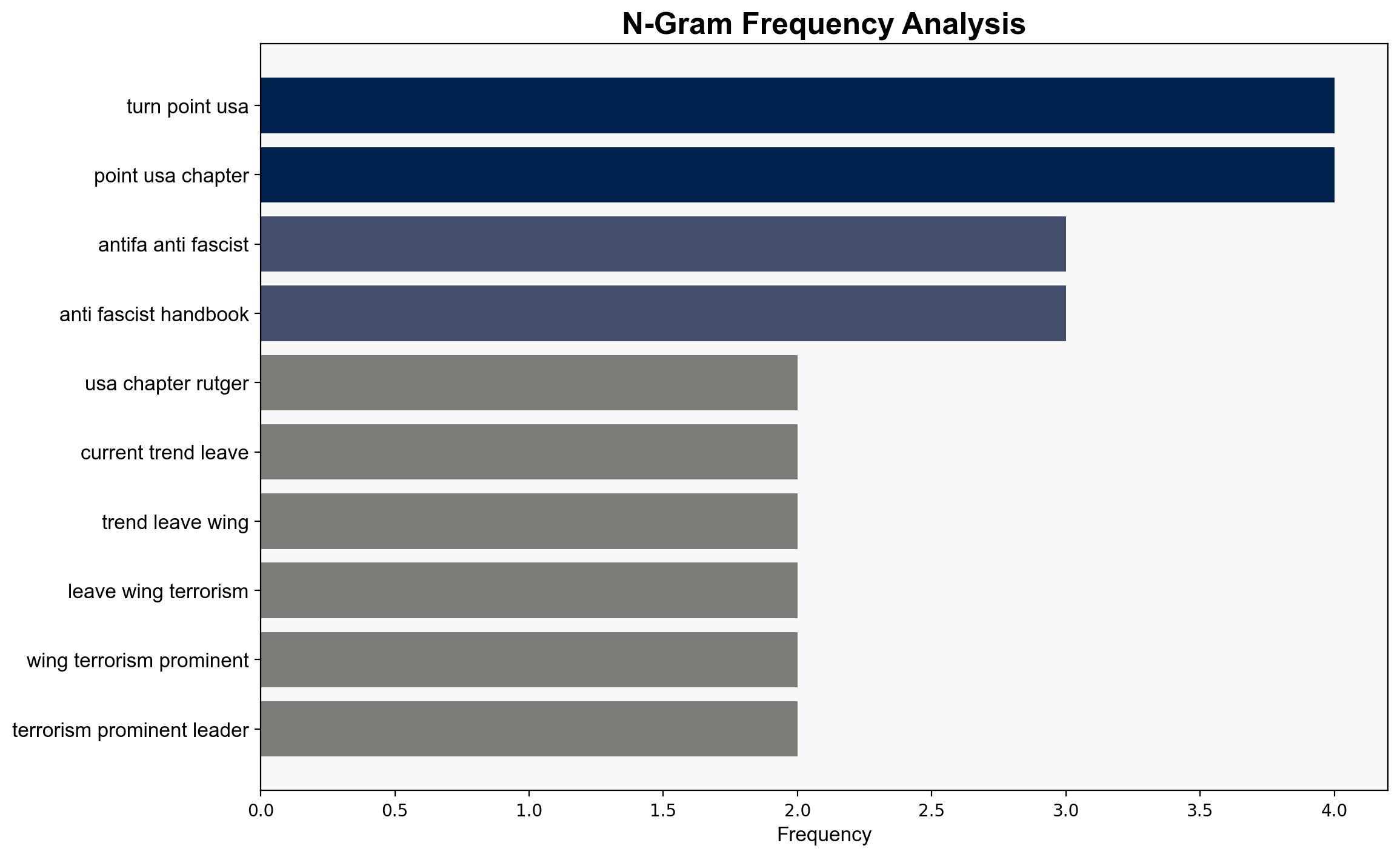Turning Point USA Chapter at Rutgers U Petitions for Removal of Antifa Aligned Prof – Legalinsurrection.com
Published on: 2025-10-05
Intelligence Report: Turning Point USA Chapter at Rutgers U Petitions for Removal of Antifa Aligned Prof – Legalinsurrection.com
1. BLUF (Bottom Line Up Front)
The most supported hypothesis is that the petition by the Turning Point USA chapter at Rutgers University is primarily a strategic move to counter perceived ideological threats on campus, rather than a response to an immediate security threat. The confidence level in this assessment is moderate. Recommended action includes monitoring campus dynamics for potential escalation and engaging in dialogue to address underlying tensions.
2. Competing Hypotheses
1. **Hypothesis A**: The petition is a strategic maneuver by Turning Point USA to counter perceived ideological bias and threats from left-wing groups on campus, using the presence of Dr. Mark Bray as a focal point.
2. **Hypothesis B**: The petition is a genuine response to an immediate threat posed by Dr. Mark Bray’s alleged promotion of political violence, perceived as endangering conservative students.
Using ACH 2.0, Hypothesis A is better supported due to the lack of direct evidence linking Dr. Bray’s activities to immediate threats or violence on campus. The focus on ideological alignment suggests a broader strategic objective rather than immediate security concerns.
3. Key Assumptions and Red Flags
– **Assumptions**: Hypothesis A assumes that the primary motivation is ideological rather than security-based. Hypothesis B assumes that Dr. Bray’s writings directly translate to actionable threats.
– **Red Flags**: Lack of specific incidents or threats directly attributed to Dr. Bray raises questions about the immediacy of the threat. The petition’s timing and media coverage suggest potential bias or agenda-setting.
– **Blind Spots**: Potential underestimation of the impact of Dr. Bray’s writings on campus dynamics and the broader socio-political climate.
4. Implications and Strategic Risks
– **Patterns**: Increasing polarization on college campuses could lead to heightened tensions and potential clashes between ideological groups.
– **Cascading Threats**: Escalation of rhetoric could lead to physical confrontations, impacting campus safety and security.
– **Geopolitical Dimensions**: This situation reflects broader national debates on free speech and ideological extremism, potentially influencing public opinion and policy.
5. Recommendations and Outlook
- Monitor campus activities and rhetoric for signs of escalation or violence.
- Facilitate open dialogue between opposing groups to reduce tensions.
- Scenario Projections:
- **Best Case**: Dialogue leads to mutual understanding and de-escalation.
- **Worst Case**: Escalation results in violence and increased polarization.
- **Most Likely**: Continued tension with sporadic incidents, requiring ongoing monitoring and engagement.
6. Key Individuals and Entities
– Mark Bray: Author of “Antifa: The Anti-Fascist Handbook”
– Megyn Doyle: Student at Rutgers University, Treasurer of the Turning Point USA chapter
7. Thematic Tags
national security threats, counter-terrorism, ideological extremism, campus safety





